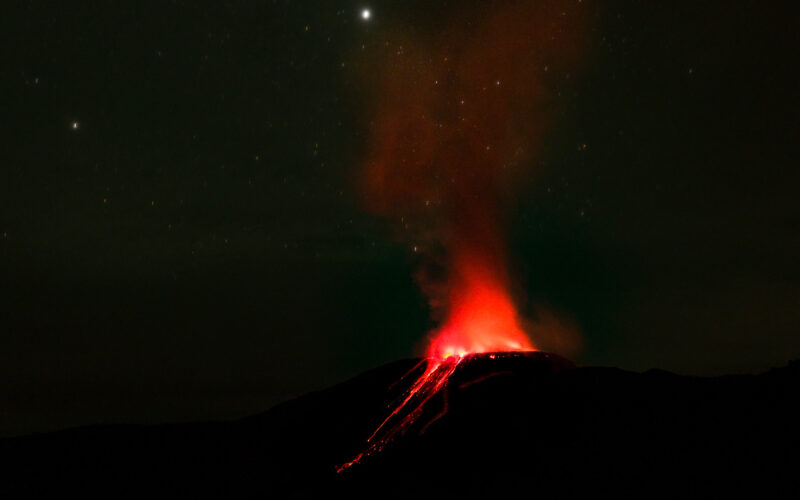On Tuesday, Indonesia’s Mount Ibu volcano erupted, releasing thick columns of grey ash up to five kilometers (three miles) into the sky, according to the country’s volcanology agency. However, there were no immediate reports of evacuations.
The eruption occurred on the eastern island of Halmahera at 5:36 a.m. and lasted for about two minutes, stated Heruningtyas Desi Purnamasari, an official of the PVMB agency. She mentioned that all activities within seven kilometers (4.4 miles) of the crater were prohibited. Heruningtyas added that the recent volcanic activity was due to intense magma movement, maintaining that the volcano’s alert status has been at the highest level since May 16.
Video footage provided by the agency, PVMB, showed clouds of grey ash billowing into the sky from the crater, following a smaller eruption on Monday.
These recent eruptions are part of a series that began in May, prompting authorities to evacuate seven nearby villages. However, Tuesday’s eruption did not require any new evacuations, according to the BNPB disaster agency.
Indonesia sits within the “Pacific Ring of Fire,” an area known for its high seismic activity, where multiple tectonic plates intersect.
In the previous month, the eruption of the Ruang volcano in North Sulawesi emitted incandescent lava, leading to the evacuation of over 12,000 individuals.
Furthermore, more than 60 people lost their lives due to flash floods and cold lava flow from Mount Marapi, one of West Sumatra’s most active volcanoes, after heavy rainfall on May 11 inundated several nearby districts.








